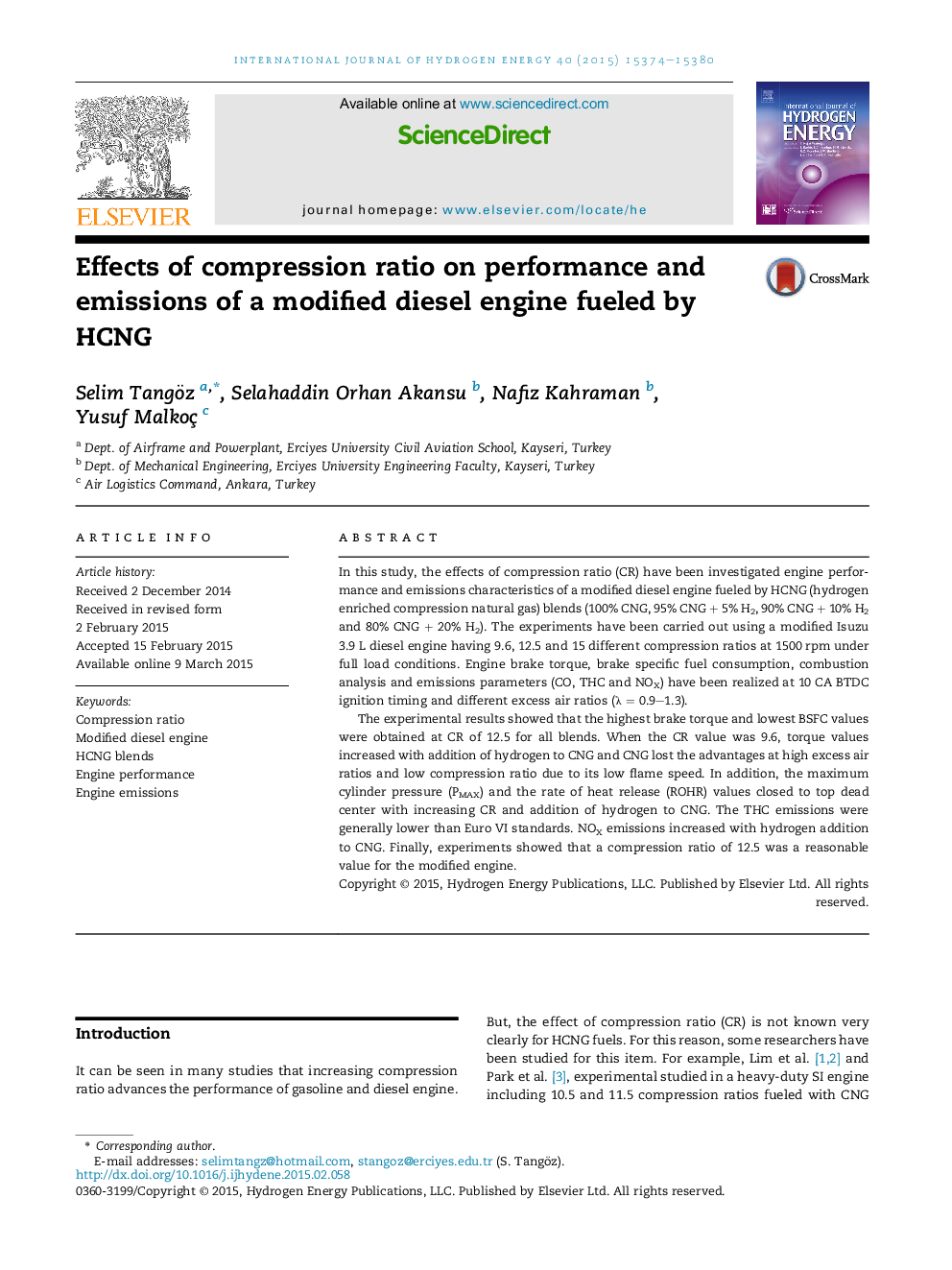| Article ID | Journal | Published Year | Pages | File Type |
|---|---|---|---|---|
| 1274016 | International Journal of Hydrogen Energy | 2015 | 7 Pages |
•The effects of compression ratio were investigated engine performance and emissions of a modified diesel engine fueled by HCNG.•The highest brake torque and lowest BSFC values were obtained at CR of 12.5 for all blends.•The HC and CO emissions values were gotten lower than Euro V or Euro VI standards for the fuels.
In this study, the effects of compression ratio (CR) have been investigated engine performance and emissions characteristics of a modified diesel engine fueled by HCNG (hydrogen enriched compression natural gas) blends (100% CNG, 95% CNG + 5% H2, 90% CNG + 10% H2 and 80% CNG + 20% H2). The experiments have been carried out using a modified Isuzu 3.9 L diesel engine having 9.6, 12.5 and 15 different compression ratios at 1500 rpm under full load conditions. Engine brake torque, brake specific fuel consumption, combustion analysis and emissions parameters (CO, THC and NOX) have been realized at 10 CA BTDC ignition timing and different excess air ratios (λ = 0.9–1.3).The experimental results showed that the highest brake torque and lowest BSFC values were obtained at CR of 12.5 for all blends. When the CR value was 9.6, torque values increased with addition of hydrogen to CNG and CNG lost the advantages at high excess air ratios and low compression ratio due to its low flame speed. In addition, the maximum cylinder pressure (PMAX) and the rate of heat release (ROHR) values closed to top dead center with increasing CR and addition of hydrogen to CNG. The THC emissions were generally lower than Euro VI standards. NOX emissions increased with hydrogen addition to CNG. Finally, experiments showed that a compression ratio of 12.5 was a reasonable value for the modified engine.
